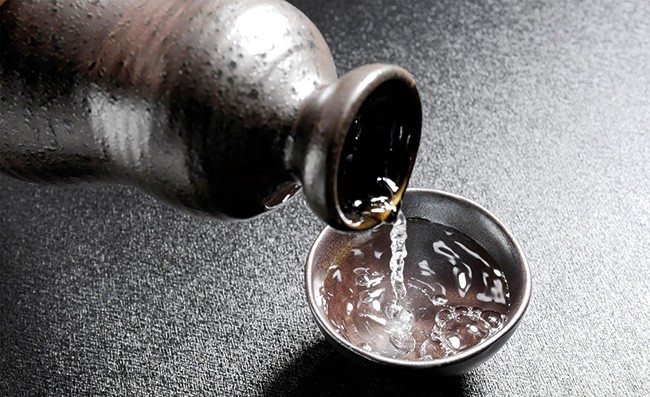
The fair has provided another perception of this alcohol. Moving out of the standards and uniformity, the atypical sakes have been spotlighted. Co-organizer Sylvain Huet refined his selections emphasizing on this aspect.
For the third edition of the Saké Tasting (22 to 24 October 2016) a special care has been given to the different workshops. Paris could discover new flavours through subtle and original pairings. With 8 workshops—double of last year—one could open his mind to the possible matches.
The workshops Desserts & sakés aroused curiosity. It hosted three French chefs, pastry chefs, ice cream and chocolate makers. Each of them has created a special confection in pairing with a saké. Xavier Thuizat, head sommelier at Peninsula Paris, supported them to perfect the food and alcohol matches.
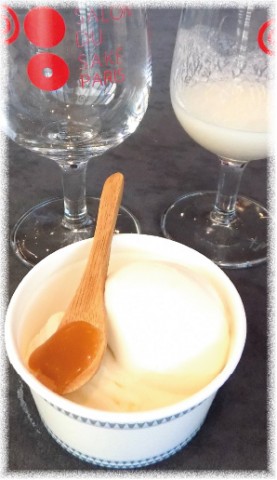
• Dessert : glace amazake, riz au lait kôji & caramel au saké
par Emmanuel Ryon
• Un saké Nigori Kijoshu : « Kiyomori Heian »
d’Enoki Shuzo (préfecture d’Hiroshima)
Emmanuel Ryon, Best Craftsman of France ice cream maker (Une Glace à Paris, Paris 3rd), created the first dessert: a koji ice cream. The koji (rice fermented with Aspergillus Oryzae) is used to make sake. The pairing was all the more interesting thanks to the kind of sake chosen, a Nigori. This atypical alcohol stands out from others as it is not filtered. Its thicker texture gives it another consistency. In the nose then on the palate, notes of banana. Also hints of plum. With the creamy and milky texture of both products, the fruity and floral aromas of the sake, the result is spell-binding. The starch provides an interesting length on the palate.
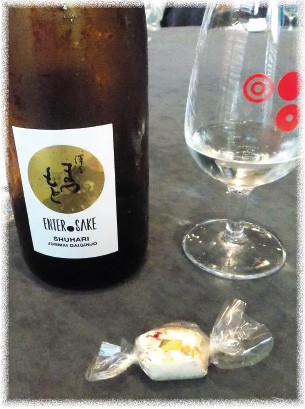
• Dessert : nougat au yuzu confit et cranberry
par Jonathan Blot
• Saké : « Collection Enter.Sake Shuhari »
de Matsumoto Shuzo (préfecture de Kyoto)
The flavours of cranberry, pistacchio, hazelnut and chestnut honey of this fresh nougat rival with the tangy side of the candied yuzu.The sake is spritzy with delicate but tertiary notes. The supple but dense consistency of the nougat perfectly matches this sake with fermented, slightly milky and light notes.

• Dessert : macaron au pop-corn par Jonathan Blot
• Un saké Junmai Daiginjo : « Heyan Kyo »
de Masuda Tokubee Shuzo (préfecture de Kyoto)
Jonathan Blot, pastry chef of L’Acide Macaron (Paris 17th), imagined a pink macaron whose halves hold a ganache with cocoa butter and a drop of sake. The latter balances the sweet notes. Chips of popcorn are used as a garnish. The play on textures and flavours is highlighted by the sake Heian Kyo. The delicacy of the latter, its subtle shades of rice and creamy notes perfectly match the macaron.
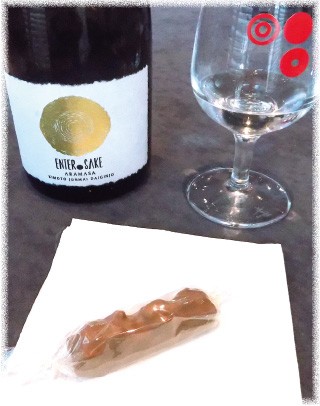
• Dessert : barre chocolat au lait, pistaches caramélisées et framboises
par Sophie Vidal (Atelier Jacques Genin)
• Un saké Junmai Daiginjo méthode Kimito :
Collection Enter.Sake Aramasa » de Aramasa Shuzo (préfecture d’Akita)
The chocolate created by Sophie Vidal distinguishes itself by the notes of caramelized pistacchios and raspberry. The sake has been chosen out of the Collection Enter Saké that gathers the best sakes of each producer. Here Aramasa Shuzo used a forgotten yeast to give it a renewed legitimacy. Something to be noted, this sake has been aged in a barrel. The lactic acid and the bacteria enabled to develop indigenous yeasts. The sake has fermented notes in the aftertaste, perfect to provide some freshness to the pairing with chocolate.
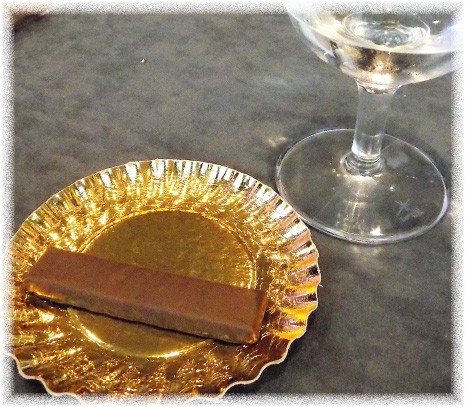
• Dessert : barre chocolat noir et matcha
par Sophie Vidal (Atelier Jacques Genin)
• Saké : « Kawasemi » de Koshinohana Shuzo (préfecture de Niigata)
The Madagascar dark chocolate has 71% of cacao. The matcha tea gives the confection hints of bitterness. The sake catches the attention as from the nose with delicate scents of honey and its freshness. On the palate it is enhanced by floral notes. It is an interesting but not spectacular pairing.
With a continuously increasing attendance and the public’s real interest for the tasting workshops, Salon du Saké has become inevitable. Sakeology is getting a greater visibility. Sake has different criteria than wines and spirits. The notions of terroir, grape variety and vintage fade away and give place to other characteristics such as the polishing of the rice (sakamai), the quality of the water, the quality of the fermentation of the koji. From these elements each sake draws its own identity, and offers the sommeliers a new world of daring pairings.
Sofia Lafaye